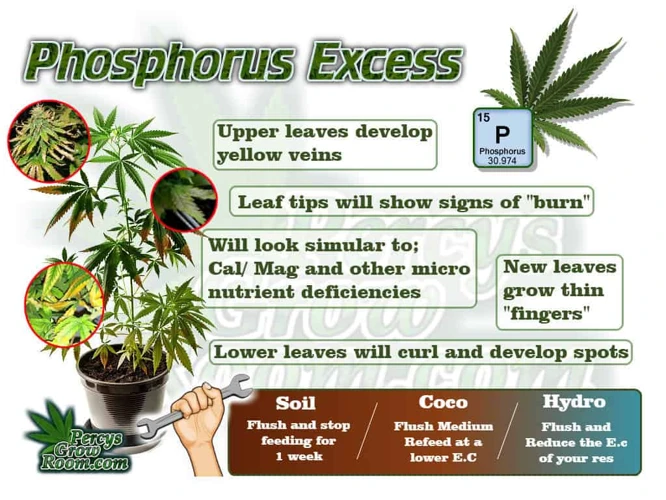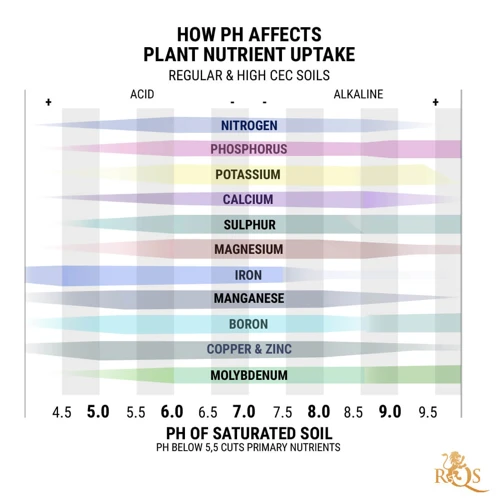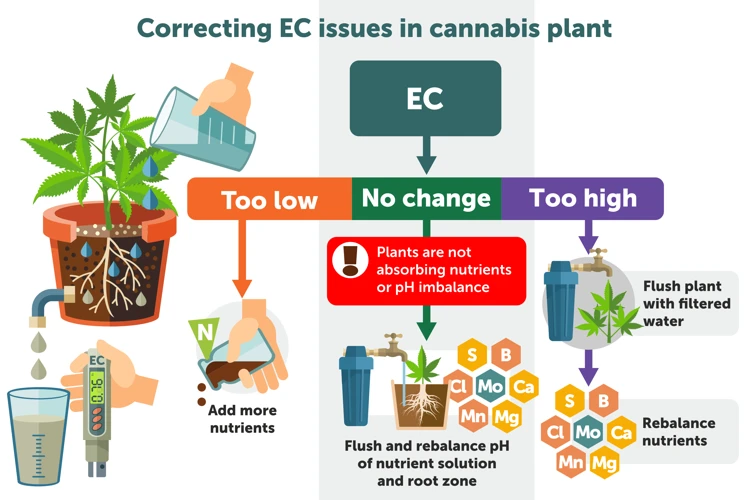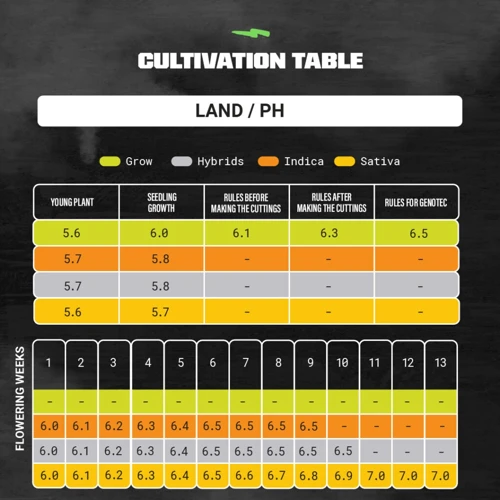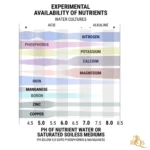
Why pH and EC Levels Matter for Growing Cannabis
Introduction
Contents
Understanding the precise requirements for watering cannabis plants can be a confusing and daunting task for new growers. However, it’s essential to recognize the significance of maintaining proper pH and EC levels. Whether you’re using soil or hydroponics, these levels are critical indicators of the plant’s overall health and growth potential. Neglecting to monitor and adjust pH and EC levels could lead to stunted growth, reduced yields, and even the death of your plant. In this article, we will delve into everything you need to know about pH and EC levels, their impact on cannabis plant growth, how to measure and adjust them, and how to troubleshoot common problems.
What are pH and EC levels?
pH and EC levels are important parameters to consider when growing cannabis plants. Understanding what these levels are and how to properly monitor and adjust them is crucial to ensure optimal plant growth and yield.
So, what exactly are pH and EC levels?
- pH: pH is a measure of the acidity or alkalinity of a solution. It is measured on a scale from 0 to 14, with 0 being the most acidic, 14 being the most alkaline, and 7 being neutral.
- EC: EC stands for Electrical Conductivity, and it measures the concentration of nutrients and salts in a solution. It is measured in millisiemens per centimetre (mS/cm) or microsiemens per centimetre (µS/cm).
Both pH and EC levels can have a significant impact on the health and growth of cannabis plants, so it is important to keep them within the proper ranges.
The Relationship Between pH and Cannabis Plant Growth
Maintaining proper pH levels is crucial for healthy cannabis plant growth. pH, which stands for potential hydrogen, is a measure of the acidity or alkalinity of a solution. It is essential to understand the relationship between pH and cannabis plant growth because pH affects the availability of nutrients in the soil and can stress or damage the plant if not properly maintained. In this section, we will explore the importance of pH levels in cannabis plant growth, why it matters, and how to measure and adjust pH levels to ensure optimal plant health.
What is pH and why does it matter?
pH stands for the “potential of Hydrogen” and it is a measure of the acidity or alkalinity of a solution. pH values range from 0 to 14, with 7 being neutral, below 7 is considered acidic, and above 7 is considered alkaline or basic.
| pH Level | Acidity/Alkalinity | Impact on Cannabis Plants |
|---|---|---|
| 0-4 | Strongly acidic | Can cause serious harm to plants and inhibit growth |
| 4-6 | Moderately acidic | Can cause nutrient deficiencies and slow growth |
| 6-7 | Slightly acidic | Ideal range for most soil grow mediums |
| 7 | Neutral | Does not affect nutrient availability, but may not be ideal for all grow mediums |
| 7-8 | Slightly alkaline | Ideal range for most hydroponic systems |
| 8-10 | Moderately alkaline | Can cause nutrient lockout and slow growth |
| 10-14 | Strongly alkaline | Can cause serious harm to plants and inhibit growth |
pH matters because it affects the availability of nutrients in the grow medium. Each nutrient has a specific pH range in which it can be taken up by the plant. If the pH is too high or too low, the plant can’t absorb the nutrients it needs, even if they are present in the soil or solution. This can result in nutrient deficiencies or toxicities, stunted growth, and poor yields. It’s important to monitor and adjust pH levels to ensure optimal nutrient absorption and healthy plant growth.
How does pH affect cannabis plant growth?
The pH level of water plays a crucial role in the growth of cannabis plants. It is important to maintain a balanced pH for cannabis plants to thrive. pH level refers to the amount of acidity or alkalinity in water. A pH scale ranging from 0-14 is used to measure the acidity and alkalinity of water. A pH of 7 is considered neutral, while a pH below 7 is acidic and above 7 is alkaline.
When it comes to cannabis growing, maintaining a pH level between 6.0 and 7.0 is essential for healthy plant growth. If the pH level is too high or too low, it can lead to nutrient deficiencies or toxicities, which can stifle plant growth and yield. Below is a table that summarizes the effects of pH level on cannabis plant growth:
| High pH | Low pH |
|---|---|
| • Leaves may appear yellow, stunted or have brown spots • Plants may experience nutrient deficiencies in iron, manganese, zinc and phosphorus • Reduced absorption of water and nutrients by roots • Lower yields |
• Leaves may appear dark green and curled • Some nutrients will be unavailable for absorption by roots • Toxicity levels of certain nutrients like manganese, zinc and iron may increase • Reduced absorption of water and nutrients by roots |
As shown in the table, both high and low pH levels can have detrimental effects on cannabis plant growth. It is important to regularly monitor the pH levels of the water used for growing cannabis plants and adjust it as necessary to keep it within the optimal range for healthy plant growth.
How to measure and adjust pH levels
When it comes to measuring and adjusting pH levels in cannabis plants, there are a few key steps to follow. First, it’s important to have the right tools on hand, including a pH meter, pH calibration solution, and pH adjusting agents.
Once you have your tools ready, follow these steps to measure and adjust the pH levels in your cannabis plants:
| Step | Action |
|---|---|
| Step 1 | Fill a clean container with water |
| Step 2 | Insert the pH meter into the water and wait for it to stabilize |
| Step 3 | Check the pH reading on the meter |
| Step 4 | Compare the pH reading to the optimal levels for your cannabis plant’s growth stage |
| Step 5 | If the pH is too high, add pH down solution to lower the pH level. If the pH is too low, add pH up solution to raise the pH level. |
| Step 6 | After adding pH adjusting agents, wait for 10 to 15 minutes and test the pH level again. Repeat this process until the target pH range is achieved. |
It’s important to note that pH levels can differ depending on whether your cannabis plant is grown in soil or hydroponic systems. When growing cannabis in soil, the optimal pH range is between 6.0 and 7.0. Whereas, in hydroponic systems, the optimal pH range is between 5.5 and 6.5.
Monitoring and adjusting pH levels regularly is crucial for maintaining healthy cannabis plants. Make sure to follow the correct procedures and use proper tools to ensure accurate measurements and adjustments.
The Importance of EC Levels in Growing Cannabis
As a cannabis grower, you are likely familiar with the importance of monitoring and adjusting pH levels in your plants’ watering. However, pH is only part of the equation when it comes to optimal cannabis growth. The other key factor to consider is EC, or electrical conductivity. EC levels are an essential measurement of the nutrient concentration in your plants’ water supply, and they play a crucial role in the health and vitality of your plants. In this section of the article, we will explore what EC is, why it matters, and how to measure and adjust EC levels for optimal cannabis growth. So, buckle up, and let’s dive into the world of EC and cannabis growing!
What is EC and why does it matter?
EC stands for Electrical Conductivity, which refers to the ability of a substance to conduct electricity. In the world of growing cannabis, EC levels are used to measure the concentration of nutrients in the water given to plants. This is important because plants cannot grow to their full potential if they do not have the right balance of nutrients.
Maintaining proper EC levels is crucial for the growth and overall health of cannabis plants. If the EC levels are too low, plants may suffer from nutrient deficiencies and fail to grow properly. On the other hand, if the EC levels are too high, this can lead to nutrient burn and damage to the plant’s roots.
Knowing the correct EC levels for your specific stage of growth is important for getting the highest yield possible. It is also important to note that different strains of cannabis may have different EC requirements, so it is essential to do your research or consult a professional grower for guidance.
Monitoring and adjusting EC levels is also important for growers who use hydroponic systems. In hydroponic systems, plants are grown in a water-based solution rather than soil, so the nutrients must be carefully controlled to ensure optimal growth.
Maintaining proper EC levels is an essential aspect of growing healthy and robust cannabis plants. It allows for optimal nutrient uptake and helps to prevent nutrient deficiencies and damage to the plant’s roots.
How does EC affect cannabis plant growth?
EC, or electrical conductivity, is a measure of the amount of salts and other minerals in the water being used to water cannabis plants. When the EC levels are too high or too low, it can have a negative impact on the plant’s growth and overall health. Here are some ways that EC levels affect cannabis plant growth:
- Nutrient uptake: When EC levels are too high, it can cause nutrient lockout and prevent the plant from absorbing the necessary nutrients it needs for growth. Conversely, when EC levels are too low, the plant may not be getting enough nutrients and may become stunted or weak.
- Root health: Over time, high EC levels can cause an accumulation of salts that can damage the roots of the plant. This may lead to root rot and other issues that can affect the overall health of the plant.
- Water absorption: High EC levels can also affect the osmotic pressure, or water absorption rate, of the plant. This means that the plant may not be able to absorb water as effectively and may become dehydrated or wilted.
- Plant metabolism: EC levels can also affect the metabolic rate of the plant, including photosynthesis, which is critical for plant growth. When EC levels are too high or too low, it can impact the plant’s ability to produce energy and grow properly.
To ensure proper EC levels for cannabis plant growth, it is important to closely monitor and adjust the levels as needed. This includes measuring the EC of the water, adjusting nutrient levels as necessary, and flushing the plants periodically to prevent salt build-up. By maintaining optimal EC levels, you can help promote healthy and vigorous growth in your cannabis plants.
How to measure and adjust EC levels
Measuring and adjusting EC levels is essential for maintaining healthy cannabis plant growth. EC stands for electrical conductivity, which is a measure of the level of salts and other minerals in the water or nutrient solution. An EC meter is required to measure the electrical conductivity of the water.
To measure EC levels, follow the steps below:
| Step | Action |
|---|---|
| Step 1 | Turn on the EC meter and immerse the probe into the water. Allow the reading to stabilize. |
| Step 2 | Read the electrical conductivity value displayed on the meter. |
| Step 3 | Compare the EC reading to the recommended range for your stage of plant growth. For example, in the vegetative stage, the recommended EC range is between 0.8-1.6 mS/cm, and in the flowering stage, it is between 1.6-2.4 mS/cm. |
| Step 4 | If the EC reading is too high, dilute the water with distilled or reverse osmosis water until it falls within the recommended range. If the EC reading is too low, add nutrient solution to the water to increase the EC value. |
| Step 5 | Stir the solution well and recheck the EC reading. Adjust as necessary. |
It is important to note that different stages of plant growth require different levels of EC, as noted in the table above. Adjusting the EC levels appropriately can help prevent nutrient deficiencies and toxicity, which can negatively impact plant growth and yield.
It is important to watch for fluctuations in EC levels, which can occur due to factors such as changes in temperature, pH, and water evaporation. Consistently monitoring and adjusting EC levels can help maintain optimal conditions for cannabis plant growth.
How to Monitor pH and EC Levels
As a cannabis grower, it’s important to regularly monitor the pH and EC levels of your plants’ nutrient solution. This not only ensures that your plants are getting the right amount of nutrients, but also helps to prevent any potential problems down the line. In this section, we’ll discuss different methods for monitoring these important levels and provide tips for adjusting them as needed. Let’s dive in!
Using pH and EC meters
When it comes to monitoring pH and EC levels in cannabis plants, accuracy is key. The best way to ensure precision is by using pH and EC meters. These devices are widely available and easy to use, making them a valuable tool for any grower.
| Meter type | Pros | Cons |
|---|---|---|
| Digital pH meter | Highly accurate readings, easy to use, and fast results | Requires frequent calibration and maintenance, can be expensive |
| Test strips | Quick and affordable, no calibration or maintenance required | Less accurate than digital meters, and results can vary |
| Digital EC meter | Highly accurate readings, easy to use, and fast results | Expensive and requires frequent calibration and maintenance |
| TDS meter | Quick and affordable, provides a general idea of nutrient levels | Less accurate than digital EC meters and can vary between brands |
While digital meters may be more expensive than other options, they provide the most precise readings. However, they require frequent calibration and maintenance to ensure accuracy. Test strips are a quick and affordable option, but they may not be as accurate and consistent as digital meters.
It’s also important to remember that pH and EC meters should only be used for a single purpose. Using the same meter for measuring pH and EC levels can lead to inaccurate readings due to cross-contamination.
No matter which type of meter you use, it’s important to clean and calibrate it regularly. This will ensure that your readings are accurate and consistent throughout the growing process.
When and how often to test pH and EC levels
When to test pH and EC levels:
- At least once a week: Regular monitoring of pH and EC levels is crucial to ensure the health and vitality of cannabis plants. This should be done at least once a week, preferably twice or thrice.
- Before adding nutrients: The best time to test pH and EC levels is before adding nutrients to the water. This allows you to adjust the levels as needed before adding nutrients that could skew your readings.
- After adding nutrients: Once you have added nutrients to the water, it is important to wait for a few hours and then test the pH and EC levels again to ensure they are within the correct range.
- When changing water: Whenever you change the water in your hydroponic system or soil, it is a good practice to test the pH and EC levels to make sure they are where they should be.
How often to test pH and EC levels:
- Hydroponic systems: In hydroponic systems, pH and EC levels should be tested daily for optimal results. This is because hydroponic systems are more sensitive to changes in pH and nutrient levels.
- Soil grows: In soil-based grows, pH and EC levels can be tested every few days as soil is more forgiving than hydroponic systems when it comes to pH and nutrient levels.
Remember that pH and EC levels can significantly impact the growth and health of your cannabis plants. It is important to test and adjust these levels regularly to ensure optimal growth and yield.
Adjusting pH and EC levels in hydroponic vs soil grows
When it comes to adjusting pH and EC levels in hydroponic versus soil grows, there are some key differences to keep in mind.
pH Levels:
In hydroponic systems, pH levels are generally easier to adjust since you have complete control over the nutrient solution. You can add pH up or down solutions directly to the reservoir to achieve the desired pH level. However, you need to be cautious not to overdo it and make sudden swings in pH levels. In soil grows, pH levels can be more challenging to manage since the soil acts as a buffer and may require more time to adjust.
EC Levels:
In hydroponic systems, it’s essential to monitor and adjust EC levels regularly, especially as plants progress through their growth stages. In soil grows, EC levels are less critical since the soil acts as a natural buffer and provides some nutrients to the plant. However, it’s still essential to keep an eye on EC levels and adjust as necessary.
Here is a table summarizing the main differences in adjusting pH and EC levels in hydroponic versus soil grows:
| Hydroponic Grows | Soil Grows |
|---|---|
| Easy to adjust pH levels | Challenging to adjust pH levels |
| Important to monitor and adjust EC levels | Less critical to adjust EC levels |
| Complete control over nutrient solution | Soil acts as a natural buffer |
Whether you are growing in hydroponics or soil, it’s crucial to monitor and adjust pH and EC levels regularly to ensure healthy plant growth. By being diligent in maintaining optimal levels, you can ensure a bountiful harvest of healthy and potent cannabis.
Troubleshooting pH and EC Issues
As much as we try to maintain the perfect pH and EC levels for our cannabis plants, sometimes issues can arise despite our best efforts. When the pH or EC levels go out of range, it can lead to stunted growth, nutrient deficiencies, and other problems. It’s important to be able to troubleshoot these issues in order to get our plants back on track. In this section, we’ll explore some common pH and EC problems that cannabis growers encounter and provide solutions to help you get your plants thriving again.
Common pH and EC problems and solutions
As with any cultivation process, growing cannabis can come with its fair share of challenges. pH and EC issues are among the most common problems that growers face. Here are some of the most common pH and EC problems, along with solutions to address them:
| Problem | Solution |
|---|---|
| The pH level is too high or too low | Solution: Adjust the pH level using a pH adjuster according to the instructions provided. For a high pH level, use an acid solution such as sulfuric or phosphoric acid. For a low pH level, use an alkaline solution such as potassium hydroxide. |
| The EC level is too high or too low | Solution: Adjust the EC level by adding or reducing nutrients or adjusting the watering frequency. Use distilled or purified water to reduce the EC level. |
| Roots are turning brown and dying | Solution: Check the pH and EC levels. Brown roots can be a sign of insufficient oxygen or nutrient uptake due to incorrect pH or EC levels. Take measures to correct these levels and consider adding an oxygen pump to provide additional oxygen to the roots. |
| Fertilizer burn | Solution: Reduce the concentration of nutrients in the solution and gradually increase concentration. Leach the excess nutrients out of the soil by watering the plant with distilled water. Preventative measures include following the manufacturer’s instructions and testing the solution before application. |
| Yellowing or stunted growth | Solution: Check the pH and EC levels. Yellowing leaves can be a sign of nutrient deficiency or over watering. Adjust the pH and EC levels and adjust watering frequency. Use nutrient supplements such as potassium or nitrogen as needed. |
By identifying and addressing pH and EC problems early on, growers can ensure that their cannabis plants thrive and produce bountiful harvests. Regular monitoring, adjustment, and attention to plant health is the key to success in cannabis cultivation.
Conclusion
In conclusion, maintaining proper pH and EC levels in the watering of cannabis plants is crucial for optimal growth and yield. The pH level of the water affects the availability of nutrients in the soil or growing medium, while the EC level determines the strength of the nutrient solution.
It is essential to regularly test the pH and EC levels and adjust them accordingly, depending on the growing medium and type of grow. For hydroponic systems, pH and EC levels need to be monitored closely and adjusted regularly to prevent imbalances that could harm the plants.
When facing pH and EC problems, it is essential to troubleshoot and correct them promptly to avoid further damage to the plants. Common pH and EC issues can include nutrient lockout, poor nutrient uptake, and nutrient burn, among others.
Overall, understanding the relationship between pH and EC levels and cannabis plant growth is critical for successfully growing healthy, robust plants. By regularly testing and adjusting pH and EC levels, growers can maintain optimal nutrient uptake and avoid common growing problems.
Frequently Asked Questions
What is the ideal pH range for growing cannabis?
The ideal pH range for growing cannabis is between 6.0 and 7.0.
What happens if the pH levels in soil are too high or too low?
If the pH levels in soil are too high or too low, it can lead to nutrient deficiencies and stunted growth in cannabis plants.
Why is it important to monitor EC levels when watering cannabis plants?
Monitoring EC levels is important because it helps ensure that cannabis plants are getting the right amount of nutrients. High EC levels can lead to nutrient burn, while low EC levels can cause deficiencies.
Can I use tap water to water my cannabis plants?
Yes, you can use tap water to water your cannabis plants. However, you should monitor the pH levels and adjust them as necessary to ensure optimal growth.
Can over-fertilizing cannabis plants lead to pH and EC problems?
Yes, over-fertilizing cannabis plants can lead to pH and EC problems. This can cause nutrient build-up in the soil or growth medium, leading to nutrient lockout and plant stress.
How do I adjust pH levels in soil?
To adjust pH levels in soil, you can add products such as dolomite lime or pH adjusting solutions. It is important to adjust pH levels gradually to prevent shock to the plants.
What is the best method for measuring EC levels?
The best method for measuring EC levels is with an EC meter or a TDS meter. These tools provide accurate, real-time readings of nutrient levels in the water or growing medium.
Can pH and EC levels differ for different strains of cannabis?
Yes, pH and EC levels can differ for different strains of cannabis. Some strains may require slightly different pH or nutrient levels for optimal growth.
How often should I test pH and EC levels?
It is recommended to test pH and EC levels at least once a week for hydroponic grows, and once every 2-3 weeks for soil grows. However, frequency may vary depending on growing conditions and nutrient schedules.
What are some signs of pH and EC problems in cannabis plants?
Signs of pH and EC problems in cannabis plants include yellowing or browning of leaves, stunted growth, and nutrient deficiencies. Testing pH and EC levels regularly can help diagnose and solve these issues.

